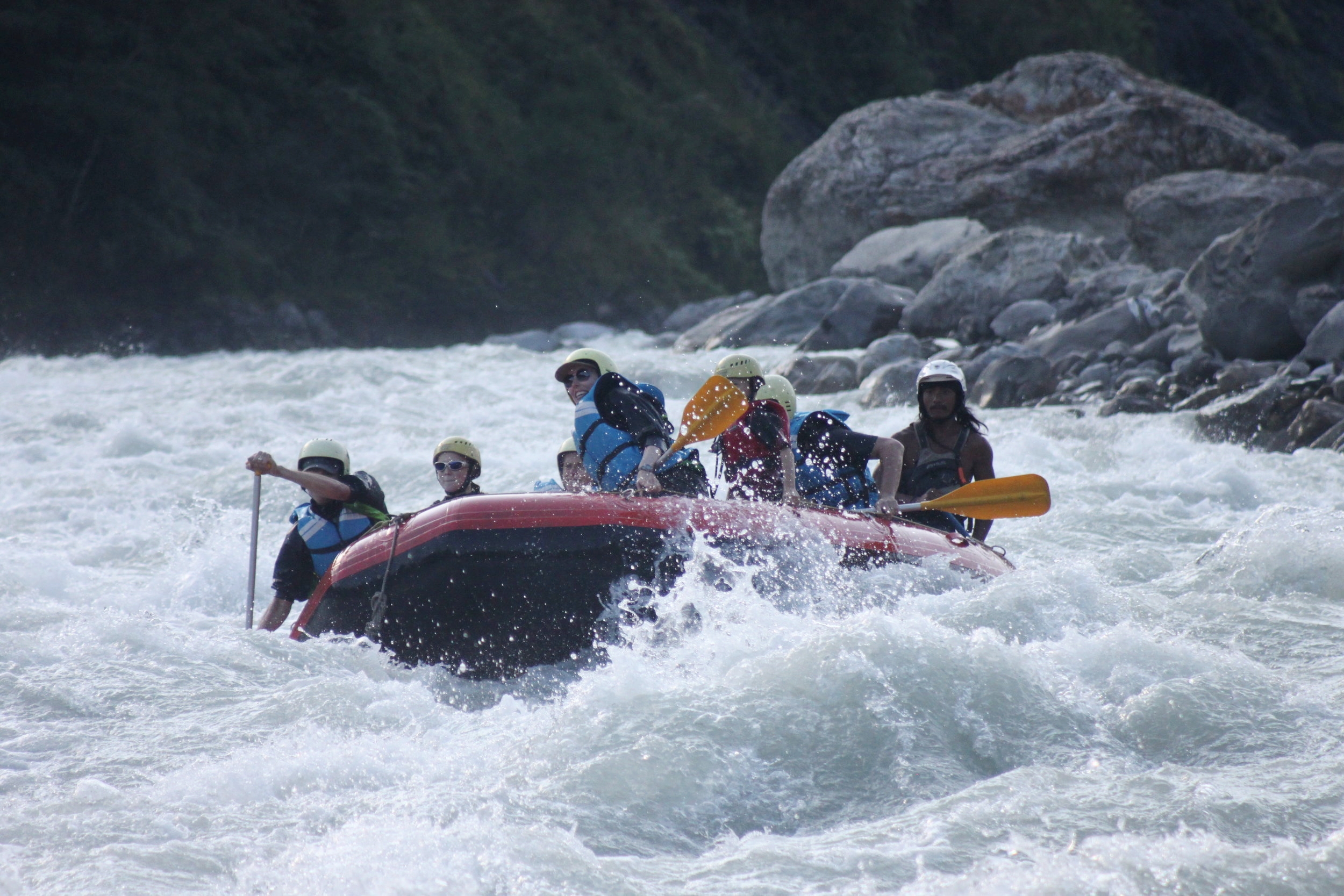Destination: Nepal - Lower Seti River
One of the most majestic rivers in Nepal is the Lower Seti. The river will take you through stunning jungle among mountains, offers up warm waters as well as playful, bouncy rapids. The waves may not be as crazy as others which makes it a great river for the beginner paddler but still exciting enough for the experienced. The Lower Seti can be ran on a short, 2 day expedition. It’s easily accessible from Pokhara and is a great alternative to the Kali Gandaki if you’re short on time and it takes you away from the crowds of the popular Trisuli River.
Put in – Damaulit
Take out – Gai Ghat
Camp – in the ‘Jungle Corridor’
River Description
The Seti Khola, meaning White River, has two parts: Upper and Lower. The upper section (described seperatly in this article) runs off the South East slopes of Machapuchare (aka Fishtail Mountain for the tourists) and flows down to Pokhara where it is dammed for Hydroelectric Power before naturally disappearing below the city and reappearing 16km away. The Lower Section then meanders its way east before joining the Trisuli and heading south to India.
The put in is about an hour’s drive from Pokhara. Most rafting outfitters will access it from the Madi Khola at Damauli as it is easy access from the main highway. As you are quickly swept away from the main highway the Seti turns into a really unique and picturesque trip. The river flows through wide open river planes, braiding and meandering as it goes. When it hits the valley sides it creates 100m high cliff faces, remember to watch out for falling rocks! The rapids in this section are predominantly grade 2 with some short sections of grade 3.
The river eventually enters what can only be described as a ‘typical Nepali valley’. The river carves a deep gorge before winding between interlocking spurs of towering green hills. The river gradually straightens and enters the ‘Jungle Corridor’. About halfway down the Jungle corridor is a great section of grade 3! Immediately above the bridge at Sarang Ghat is a boulder field that you have to twist your way in and out of. Once you emerge from the other side you have about 500m to gather yourself together before another bouncy grade 3 rapid hits. This area has a sparse population and you’ll get a real sense of the wilds of Nepal. The jungle will encompass you until your end point at the confluence with the Trisuli. This is by far the most majestic part of the journey, with plenty of birdlife, overhanging vegetation and even some valleys that can be explored on foot.
Although there is only a sparse population, keep an eye out for the locals. They will often be crossing the river in hand made dugout canoes called ‘dungas’. You’ll also need to watch out for fish traps and weirs locals use to manage the river and hunt for dinner. It’s not uncommon to hear of locals pulling out catfish over 1m long!
The river has a rushing climax just before it joins the Trisuli. There is a set of four grade 3+ rapids spread out 400m apart. They are fairly straight forward shoots with big bouncy waves and long pools to recover before the next rapid. They are sure to peak everyone’s trip! The final rapid on the river is known as ‘Coffee Pot’ and brings you to the confluence of the Trisuli. Here you have to stay well left to avoid the infamous whirlpool! Your aiming take out point is at the village of Gai Ghat.
When is the best time to Raft this river?
The great thing about this river is that it can be rafted all year round! However there are obviously some better and worse seasons for it.
The best seasons would be October to December and April to June. The water and temperature is warm and the river is at great levels.
July to September is Monsoon season. The general temperature is very warms, the river is very high and a gentle 2 days paddle turns into a 1 day blast with some more serious rapids at the end.
January to March is winter. Everything is a bit colder and the water is much lower than the rest of the season.










